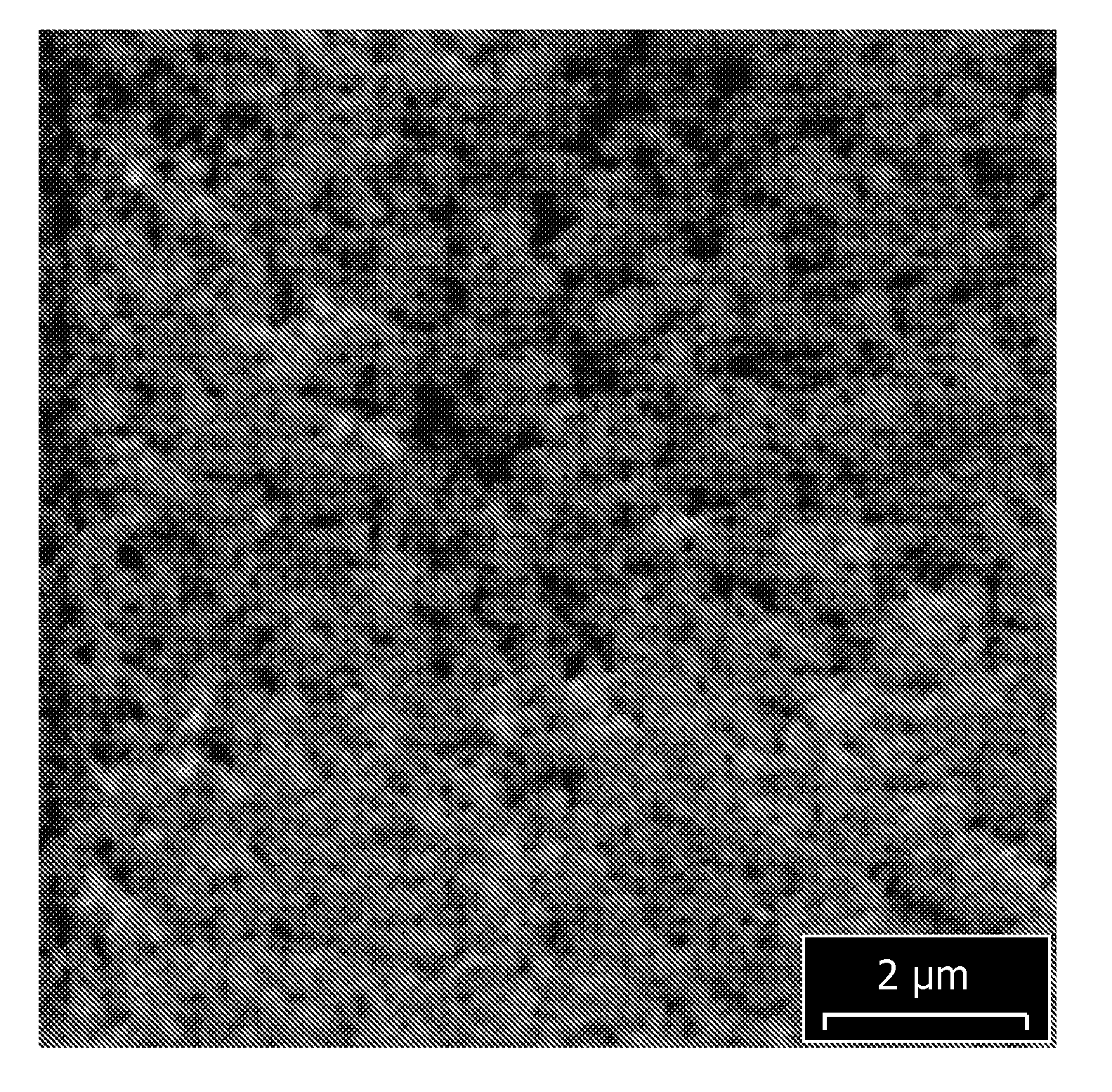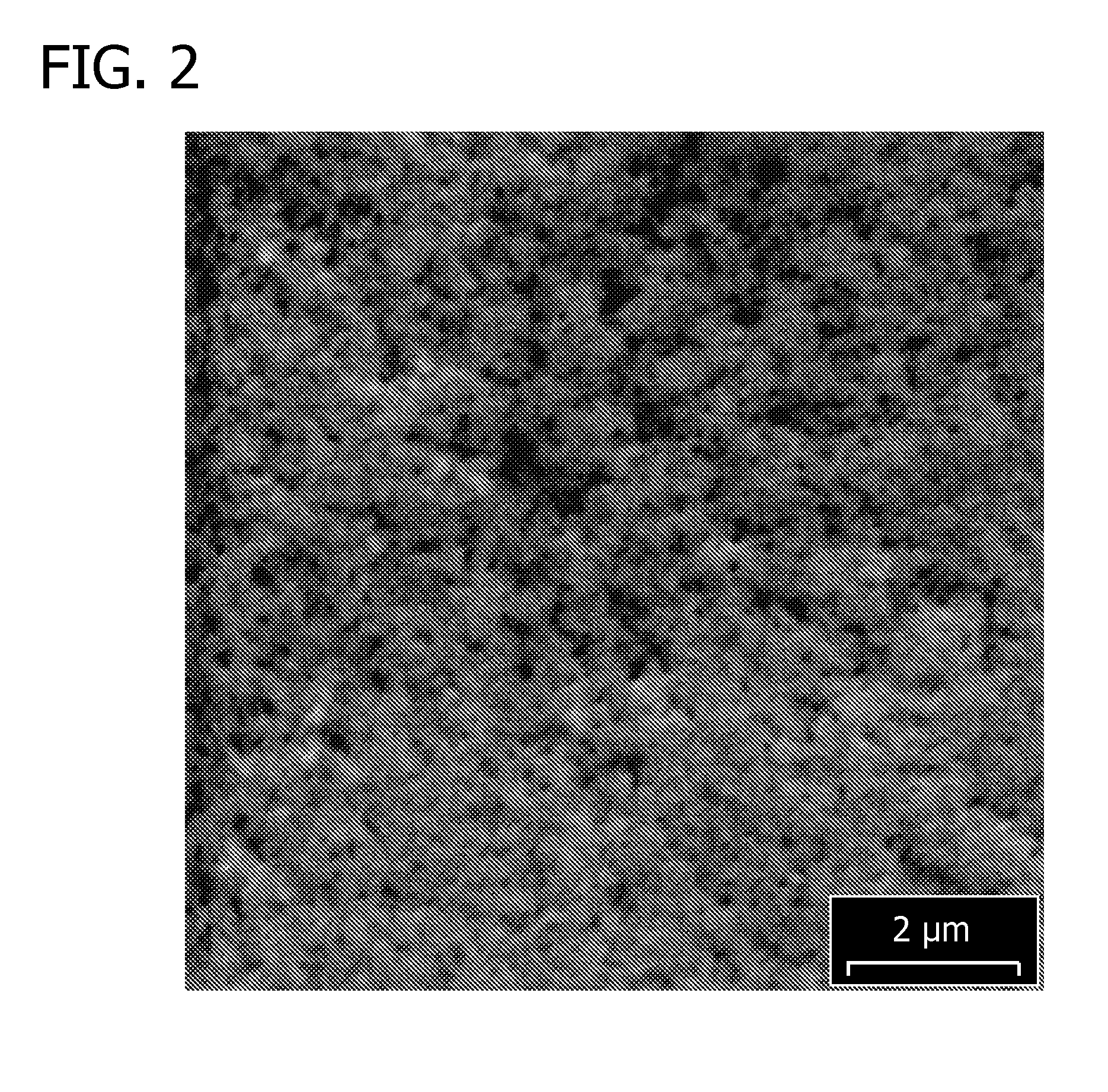Composite coatings for whisker reduction
- Summary
- Abstract
- Description
- Claims
- Application Information
AI Technical Summary
Benefits of technology
Problems solved by technology
Method used
Image
Examples
example 1
Electrolytic Plating Composition for Depositing a Composite Coating Comprising Tin and Fluoropolymer Particles
[0084]A composition for electrolytically plating a bright, glossy tin-based composite coating comprising fluoropolymer particles was prepared comprising the following components:[0085]100-145 g / L Sn(CH3SO3)2 (40 to 55 g / L Sn2+ ions)[0086]150-225 mL / L CH3SO3H (70% methane sulfonic acid solution in water)[0087]20 mL / L PTFE dispersion[0088]80-120 mL / L Stannostar® 1405 Additives
[0089]The pH of the composition was about 0. One liter of this composition was prepared. The PTFE dispersion used in this Example and in Example 2 is the 5070AN dispersion available from DuPont which comprises nanoparticles and a non-ionic surfactant. The Stannostar additives include a cationic surfactant. So in Examples 1 and 2 the particles are pre-wet with the non-ionic surfactant, but are not pre-wet with the cationic surfactant.
example 2
Electrolytic Plating Composition for Depositing a Composite Coating Comprising Tin and Fluoropolymer Particles
[0090]A composition for electrolytically plating a bright, glossy tin-based composite coating comprising fluoropolymer nanoparticles was prepared comprising the following components:[0091]100-145 g / L Sn(CH3SO3)2 (40 to 55 g / L Sn2+ ions)[0092]150-225 mL / L CH3SO3H (70% methane sulfonic acid solution in water)[0093]40 mL / L PTFE dispersion[0094]80-120 mL / L Stannostar® 1405 Additives
[0095]The pH of the composition was about 0. One liter of this composition was prepared.
example 4
Electrolytic Deposition of a Pure Tin Layer and a Composite Coating Comprising Tin and Fluoropolymer Particles
[0101]Two bright composite coatings comprising tin fluoropolymer nanoparticles (using the electrolytic plating compositions of Examples 1 and 2) and one bright, pure tin deposit (using the electrolytic plating composition of Example 3) were plated onto copper foils. The samples were plated in a beaker and the agitation was provided using a stir bar. To deposit the composite coatings comprising tin and fluoropolymer nanoparticles, the applied current density was 15 ASD, the plating duration was 50 seconds, and the deposit thickness was 5 micrometers, for a plating rate 6 micrometers per minute. SEM images of the freshly deposited composite coatings were obtained and are shown in FIG. 2 (composite coating obtained from composition of Example 1, scale=2 μm) and in FIG. 3 (composite coating obtained from composition of Example 2, scale=5 μm).
[0102]To deposit the pure tin coating...
PUM
| Property | Measurement | Unit |
|---|---|---|
| Density | aaaaa | aaaaa |
| Density | aaaaa | aaaaa |
| Percent by volume | aaaaa | aaaaa |
Abstract
Description
Claims
Application Information
 Login to View More
Login to View More - R&D
- Intellectual Property
- Life Sciences
- Materials
- Tech Scout
- Unparalleled Data Quality
- Higher Quality Content
- 60% Fewer Hallucinations
Browse by: Latest US Patents, China's latest patents, Technical Efficacy Thesaurus, Application Domain, Technology Topic, Popular Technical Reports.
© 2025 PatSnap. All rights reserved.Legal|Privacy policy|Modern Slavery Act Transparency Statement|Sitemap|About US| Contact US: help@patsnap.com



